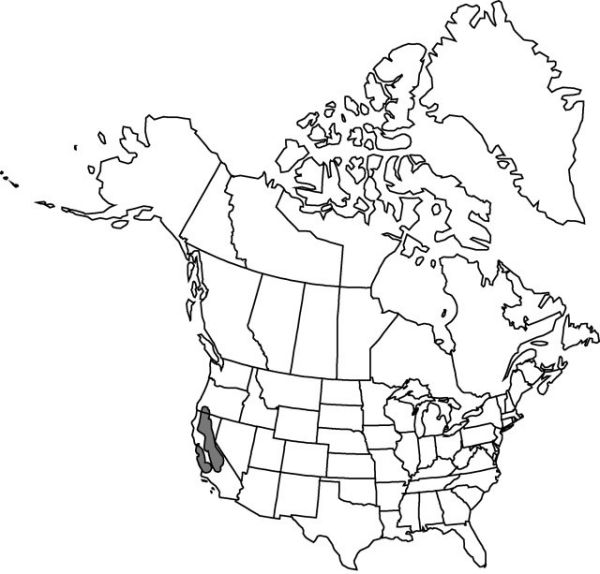Difference between revisions of "Triteleia ixioides"
Bull. Calif. Acad. Sci. 2: 142. 1886.
FNA>Volume Importer |
FNA>Volume Importer |
Revision as of 21:44, 16 December 2019
Leaves 1–2, 10–50 cm × 3–15 mm; blade linear. Scape 10–80 cm, usually smooth, sometimes scabrous near base. Flowers: perianth straw-colored or golden yellow, or sometimes white flushed with purple, usually similarly colored both adaxially and abaxially, 12–27 mm, tube acute at base, 3–10 mm, much shorter than or equal to lobes, lobes ascending to reflexed, with green, brown, or purple midveins, 6–20 mm; stamens attached at 1 level, held close to pistil, unequal, alternately long and short; filaments dilated entire length, noticeably flattened, apical appendages present, forked, those of longer filaments pointed, conspicuous; anthers white, cream, yellow, or blue, 1–2 mm; ovary longer than stipe; pedicel 1–9 cm (–12 cm in subsp. cookii). 2n = 10, 14, 16, 24, 32, 40, 42, 50.
Distribution

Calif., s Oreg.
Discussion
Subspecies 5 (5 in the flora).
As defined by L. W. Lenz (1975, 1976b), Triteleia ixioides consists of five groups of plants that, although readily recognizable as a rule, often cannot be separated by constant characters. Subspecies ixioides and subsp. cookii are strictly coastal and widely separated geographically from the three subspecies of the interior. They flower from May to August (a month earlier than subsp. scabra) and usually are found in the shade of oaks, cypresses, or pines. Polyploidy is rampant and perhaps indicative of the geographical and ecological differentiation of these morphologically similar subspecies.
Selected References
None.
Lower Taxa
Key
| 1 | Leaf 1, relatively short. | Triteleia ixioides subsp. unifolia |
| 1 | Leaves 1–2. | > 2 |
| 2 | Perianth white or pale straw-colored, sometimes with darker midvein color extending into distal portion of tepal lobe, tube nearly equal to lobes. | Triteleia ixioides subsp. cookii |
| 2 | Perianth yellow, tube shorter than tepal lobes. | > 3 |
| 3 | Anthers blue or cream; filaments with short, spreading, straight, or incurved apical appendages. | Triteleia ixioides subsp. anilina |
| 3 | Anthers cream or yellow, occasionally blue; filaments with long, slender, often recurving apical appendages. | > 4 |
| 4 | Perianth tube 7–10 mm; coastal California. | Triteleia ixioides subsp. ixioides |
| 4 | Perianth tube 3–7 mm; c, n California. | Triteleia ixioides subsp. scabra |